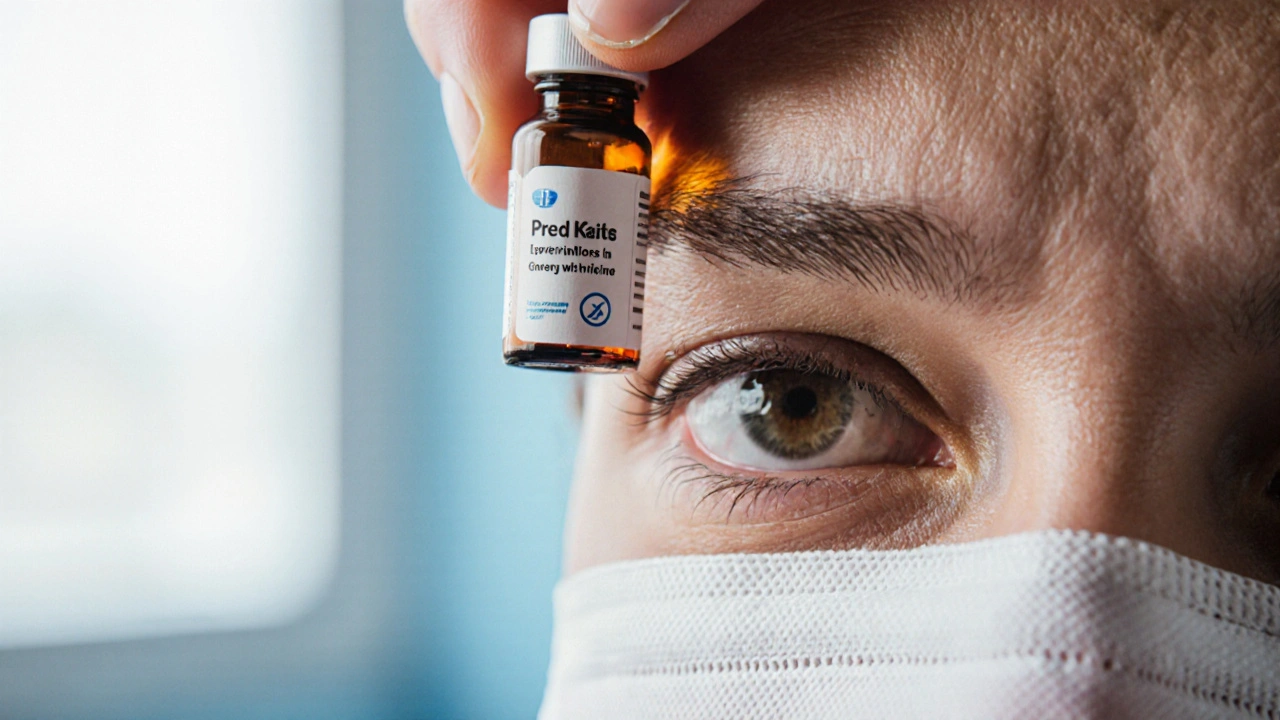Ocular Inflammation Treatment: Effective Options Explained
When dealing with ocular inflammation treatment, a set of medical and procedural strategies to calm eye swelling and protect vision. Also known as eye inflammation therapy, it often targets conditions like uveitis, inflammation of the uveal tract that can cause pain, redness and blurred vision. Common drugs include corticosteroids, potent anti‑inflammatory agents applied as eye drops or injections and immunosuppressants, medications that curb immune activity when steroids are insufficient. Topical therapy such as eye drops, liquid formulations that deliver medication directly to the ocular surface rounds out the toolkit. Understanding how these pieces fit together helps you choose the right plan.
First, ocular inflammation treatment encompasses both medication and procedural options. Medication includes topical steroids, oral immunosuppressants, and intra‑vitreal injections. Procedures range from laser therapy to surgical removal of inflamed tissue. The choice depends on the severity of the inflammation, the underlying cause, and how the eye responds to first‑line drugs. For mild cases, a short course of steroid eye drops may clear the redness in days. When the inflammation recurs or steroids cause side effects, doctors turn to immunosuppressants like methotrexate or biologics that target specific immune pathways.
Key Factors That Shape the Treatment Plan
Severity is the first driver. Acute flare‑ups with sudden pain and vision loss often demand rapid‑acting steroids, sometimes delivered by injection to reach the back of the eye quickly. Chronic uveitis, on the other hand, may require long‑term immunosuppression to keep the immune system in check without over‑relying on steroids, which can raise intra‑ocular pressure. Age and systemic health matter too; older patients with glaucoma may avoid steroids, while younger patients with autoimmune disease might benefit from biologic agents that have fewer eye‑specific side effects.
Another important consideration is the route of administration. Topical eye drops are the most convenient and are ideal for anterior eye inflammation. For intermediate or posterior eye inflammation, peri‑ocular injections or intra‑vitreal implants deliver higher drug concentrations where they’re needed. Oral tablets are useful when the inflammation involves both eyes or is linked to a systemic condition. Each route has trade‑offs: drops are easy but may require frequent dosing; injections provide strong effect but need a clinic visit; oral drugs affect the whole body and need monitoring for systemic side effects.
Monitoring is built into every treatment plan. Ophthalmologists track visual acuity, eye pressure, and inflammation grading at each visit. Blood tests may be ordered when immunosuppressants are used to watch liver function, blood counts, and kidney health. Adjustments happen quickly—if pressure rises, steroids are tapered; if inflammation persists, the dose is increased or a different drug is added. This feedback loop ensures the eye stays protected while minimizing unwanted effects.
Cost and accessibility also shape decisions. Generic steroid drops are inexpensive and widely available, while biologic injections can be pricey and may require insurance approval. Some patients find online pharmacies that ship medications safely, but it’s crucial to verify legitimacy. When cost is a barrier, doctors may opt for older, well‑studied drugs that still work well for many patients.
Side‑effect profiles guide the selection process. Steroid eye drops can cause cataracts or raise intra‑ocular pressure, especially with long‑term use. Immunosuppressants may increase infection risk or affect liver enzymes. Patients need clear instructions on what symptoms to report, such as new eye pain, vision changes, or signs of infection like fever. Early detection keeps complications at bay.
Finally, patient preferences matter. Some people prefer daily drops, while others dislike frequent eye drops and opt for a once‑monthly implant. Shared decision‑making helps align the treatment with lifestyle, reducing the chance of missed doses and improving outcomes. Open communication with the eye doctor ensures the plan stays realistic and sustainable.
All these pieces—severity, route, monitoring, cost, side effects, and personal choice—intersect to create a customized ocular inflammation treatment plan. Below you’ll find a selection of articles that dive deeper into specific drugs, comparison guides, and practical tips for managing eye inflammation. Whether you’re looking for a quick rundown of steroid eye drops or an in‑depth look at newer immunosuppressive therapies, the collection ahead offers the details you need to make an informed choice.
Pred Forte vs Other Steroid Eye Drops: A Complete Comparison
Compare Pred Forte with top steroid eye‑drop alternatives, covering potency, side‑effects, cost, and when each is best suited for ocular inflammation.
